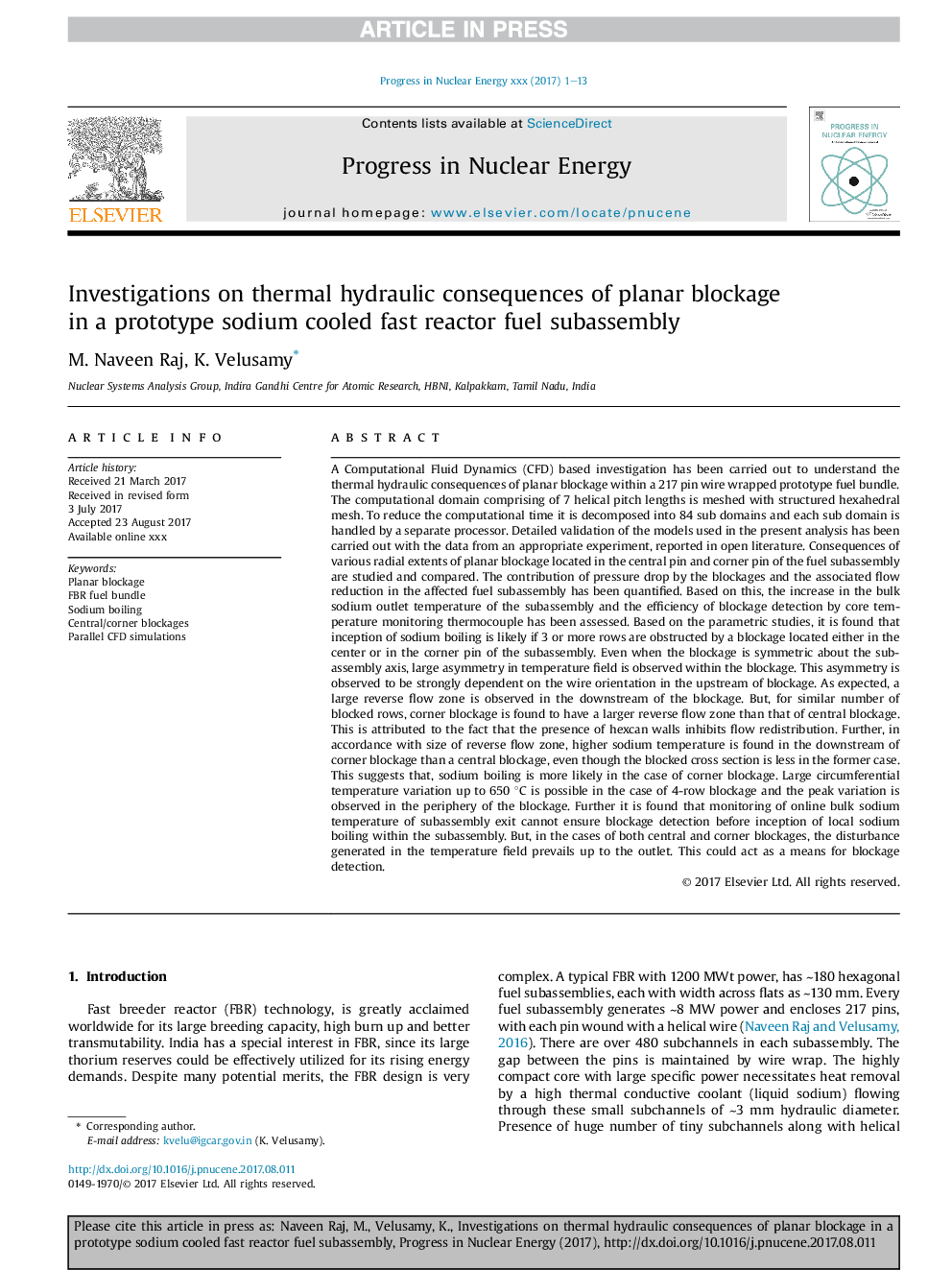| کد مقاله | کد نشریه | سال انتشار | مقاله انگلیسی | نسخه تمام متن |
|---|---|---|---|---|
| 8084393 | 1521733 | 2018 | 13 صفحه PDF | دانلود رایگان |
عنوان انگلیسی مقاله ISI
Investigations on thermal hydraulic consequences of planar blockage in a prototype sodium cooled fast reactor fuel subassembly
ترجمه فارسی عنوان
تحقیقات در خصوص اثرات هیدرولیک حرارتی انسداد مسطح در یک نمونه اولیه سیکل سربسته سوخت سریع مخزن سوخت راکتور
دانلود مقاله + سفارش ترجمه
دانلود مقاله ISI انگلیسی
رایگان برای ایرانیان
موضوعات مرتبط
مهندسی و علوم پایه
مهندسی انرژی
مهندسی انرژی و فناوری های برق
چکیده انگلیسی
A Computational Fluid Dynamics (CFD) based investigation has been carried out to understand the thermal hydraulic consequences of planar blockage within a 217 pin wire wrapped prototype fuel bundle. The computational domain comprising of 7 helical pitch lengths is meshed with structured hexahedral mesh. To reduce the computational time it is decomposed into 84 sub domains and each sub domain is handled by a separate processor. Detailed validation of the models used in the present analysis has been carried out with the data from an appropriate experiment, reported in open literature. Consequences of various radial extents of planar blockage located in the central pin and corner pin of the fuel subassembly are studied and compared. The contribution of pressure drop by the blockages and the associated flow reduction in the affected fuel subassembly has been quantified. Based on this, the increase in the bulk sodium outlet temperature of the subassembly and the efficiency of blockage detection by core temperature monitoring thermocouple has been assessed. Based on the parametric studies, it is found that inception of sodium boiling is likely if 3 or more rows are obstructed by a blockage located either in the center or in the corner pin of the subassembly. Even when the blockage is symmetric about the subassembly axis, large asymmetry in temperature field is observed within the blockage. This asymmetry is observed to be strongly dependent on the wire orientation in the upstream of blockage. As expected, a large reverse flow zone is observed in the downstream of the blockage. But, for similar number of blocked rows, corner blockage is found to have a larger reverse flow zone than that of central blockage. This is attributed to the fact that the presence of hexcan walls inhibits flow redistribution. Further, in accordance with size of reverse flow zone, higher sodium temperature is found in the downstream of corner blockage than a central blockage, even though the blocked cross section is less in the former case. This suggests that, sodium boiling is more likely in the case of corner blockage. Large circumferential temperature variation up to 650 °C is possible in the case of 4-row blockage and the peak variation is observed in the periphery of the blockage. Further it is found that monitoring of online bulk sodium temperature of subassembly exit cannot ensure blockage detection before inception of local sodium boiling within the subassembly. But, in the cases of both central and corner blockages, the disturbance generated in the temperature field prevails up to the outlet. This could act as a means for blockage detection.
ناشر
Database: Elsevier - ScienceDirect (ساینس دایرکت)
Journal: Progress in Nuclear Energy - Volume 104, April 2018, Pages 47-59
Journal: Progress in Nuclear Energy - Volume 104, April 2018, Pages 47-59
نویسندگان
M. Naveen Raj, K. Velusamy,
